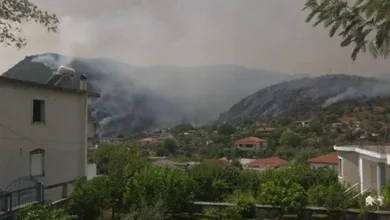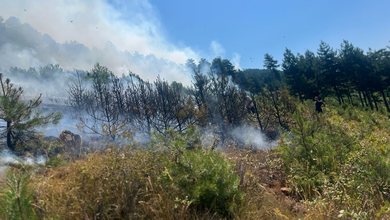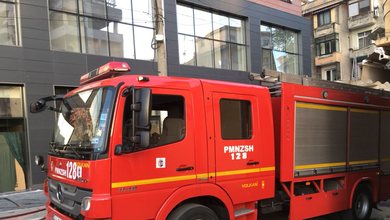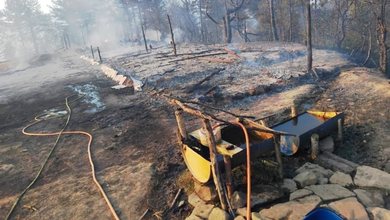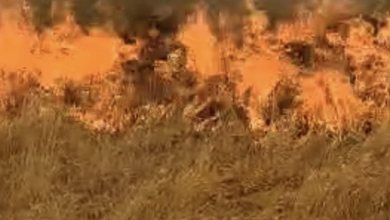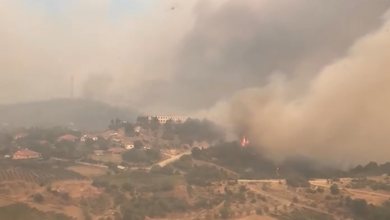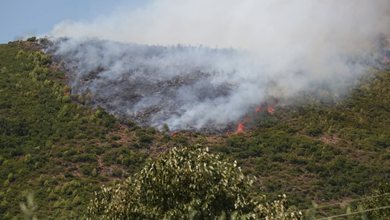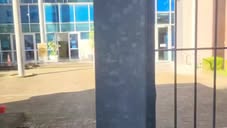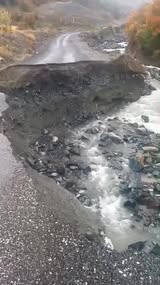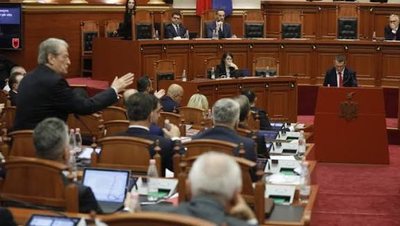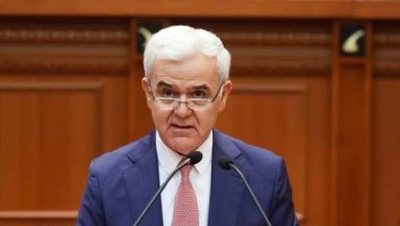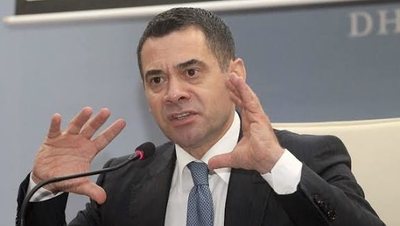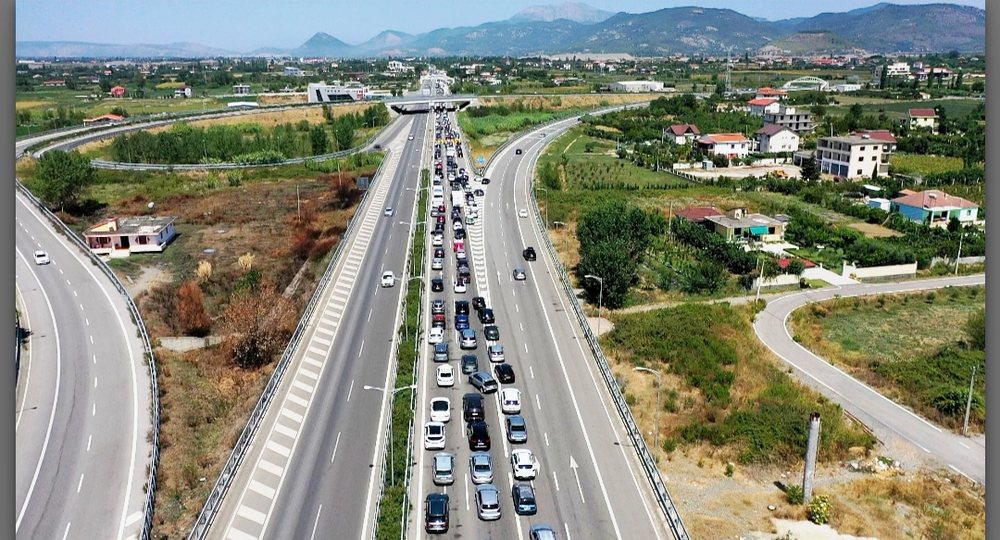
The neglect of the old bridge over the Mat River, which connects Lezha with Shkodra, has worsened the traffic situation towards Northern Albania – an area discriminated against from road investments over the last decade.
On Friday, August 8, Oltioni, an Albanian immigrant returning from vacation in Italy, left Lezha for Rinas airport at 3:00 p.m. The flight to Italy was scheduled for 8:30 p.m., but he missed it.
"I had a plane at 8:30 PM and I planned to leave Lezha about 5 hours earlier, so that I could arrive in Rinas on time. But 5 hours was not enough to travel 40 km, as the traffic was incredible and I got stuck," says the young man.
The loss of the plane cost him 400 euros for the ticket and other expenses.
"This situation is unacceptable and has never happened before on this scale," he added.
Since the end of July, the roads that cross the Lezha region have been facing an extraordinary influx of vehicles, which has brought chaos and paralysis to traffic. The severe traffic situation was further worsened by the closure of the old bridge over the Mat River, due to severe damage to its foundations.
"The Milot road-rail bridge with a length of 788 meters poses a serious risk to the stability and safety of the crossing, due to damage to the supporting foundations and pronounced erosion," the Albanian Road Authority announced the decision to close the bridge.
But the "sudden" closure of the bridge in the middle of the tourist season, despite the fact that its poor condition has been known worldwide for years, shows, according to experts, a lack of preparation and negligence, with criminal liability, on the part of the authorities.
"In a normal situation, the responsible ministry and the relevant state entity should have regularly administered all road infrastructure facilities and the technical condition of bridges, while maintaining and ensuring their safety should be seen as a primary legal and constitutional obligation," said Zef Preçi, director of the Institute for Economic Studies.
forgetfulness
Authorities have placed concrete barriers on the bridge due to the damage. Photo: Elvis Hila.
In its communication to the media about the bridge's blockage, ARRSH notes that its damage was a result of uncontrolled gravel exploitation and erosion on the riverbed.
But the situation was not unexpected. Residents of the area and users of the bridge have been complaining about damage to its structure for years.
In fact, footage of the bridge's damage and news that the bridge was at risk of collapse were made public in 2019, 2021, and 2024. Ten days before the ARA's decision to close the bridge until it was reconstructed, there was another television news report showing the deteriorating situation of the bridge built in 1987.
The footage from different years shows the same situation on the bridge and is evidence of neglect and lack of maintenance over the years. It is also evidence of the failure to control the uncontrolled exploitation of the riverbed for aggregates, despite this being an issue that has been reported dozens of times.
The forgetfulness and sudden decision to block the road was harshly criticized by the Bishop of Rrëshen, Dom Gjergj Meta.
"Does anyone check the condition of the bridges in a timely manner so that preventive intervention can be taken to prevent the blockage of an axis that is an important relief valve, especially during this period?" Dom Meta wrote on Facebook after the news of the bridge blockage.
He said the decision was made without prior notice and in the middle of the flow, causing a blockage in the area. “No accountability, no prior notice,” Meta wrote.
For his part, Preçi says that there should be investigations against those who have neglected their obligations to maintain and guarantee the safety of the bridge, while raising accusations that the forgetfulness may not be unintentional.
"From this perspective, neglecting to destroy the bridge could also be the first preparatory step for a strong, predetermined multi-million tender, and it remains to be seen who the next "oligarch" will be to enrich himself thanks to clientelistic decision-making and widely suspected corruption in the country's road infrastructure," he said, adding that this was not the first case of intentional abandonment of infrastructure facilities to favor the award of tenders.
The discriminated North
On the road connecting Lezha with Shkodra, cars stand in traffic for hours. Photo: Elvis Hila.
The closure of the old bridge over the Mat River at the peak of the season further burdens the road axis connecting Tirana with Lezha and Shkodra.
According to Traffic Police data, over 100 thousand vehicles pass every 24 hours on the roads that cross Lezha, while during the weekends this number increases significantly due to the flow towards the coast. To cope with the situation, Traffic Police has increased its presence on the ground and patrols have been placed at the most critical points. However, this has not been enough to avoid chaos.
"The Lezha region is a transit for the entire north. In the summer season, over 100 thousand vehicles pass through in 24 hours. Even though the Police services are at all intersections, it is extremely difficult to avoid traffic," said Valmir Nikolli, head of Road Traffic in Lezha.
The most problematic axis remains the Laç-Lezhë road, where citizens need between 2 and 4 hours to travel just 20 km.
"I've been on this road for two and a half hours, I came from New York, I've been tired for 24 hours. Even the temperatures suffocated us," said a traveler we met on Sunday while she was stuck in traffic on the Laç-Lezha axis.
Meanwhile, a citizen from Kosovo, who had gone on vacation with his family to Shëngjin, said that he had been stuck in traffic for more than 6 hours.
"We're coming from Vushtrri to go to the beach in Albania. Traffic, terrible. Maybe we'll arrive in the evening. I've never had to wait like this before. We don't even know how we're going to get back to Kosovo," he said.
The elected MP of the Democratic Party, Gjin Gjoni, describes the situation as unprecedented and blamed the closure of the bridge.
“The traffic crisis has been created more by the closure of the old bridge over the Mat River – a vital alternative route,” he said. Gjoni said this situation was a consequence of the government’s abandonment of the north of the country. “In temperatures above 40°C, travelers suffer, businesses lose customers, and the country’s image for foreign tourists is being destroyed. This is a clear reflection of a government that has abandoned the north,” said the elected opposition MP.
The situation was also raised by the opposition at the last meeting of the Lezha Municipal Council. The Mayor, Pjerin Ndreu, in response to the opposition's concerns, said that there would be a quick intervention and that the bridge would be opened for small vehicles. "The deputy minister, the director of roads and MP Kadeli have arrived. There is a promise that the bridge will be accessible for vehicles up to 3.5 tons, but this cannot be done immediately," said Ndreu.
However, in the council, Ndreu said that work was being done on a long-term solution. "We will lobby hard for the construction of the Milot-Balldren highway, as it is the only solution for Lezha's traffic," he said.
The government's plans to build this axis under concession have failed several times since 2018. A recent tender was canceled just a few weeks ago because, according to the Ministry of Infrastructure, the offers did not meet the set requirements. However, the government announced on Monday the reopening of the competition for this segment, which is expected to cost 364 million euros and be granted under concession for 35 years.
However, for the opposition, this new competition does not bring hope. “The government has been deceiving for 12 years about the construction of the Milot-Balldren axis,” said elected MP Gjin Gjoni. He said the current situation was a sign of negligence and “open discrimination against this area.”
Preçi is also pessimistic about the construction of the segment, telling BIRN that the northern area of the country had been neglected in terms of infrastructure investments and that the government had made electoral investments, but not useful ones.
"From this perspective, I do not see the consequences of the delay in expanding this road as closely linked only to the tourism season or the boom of the last two or three years. I see them as an ignoring of the fundamental economic interests of the inhabitants of Northern Albania, which cannot be justified by the investment connecting Shëngjin with Velipoja," he said, referring to the Milot-Balldre segment.
Reporter.al


